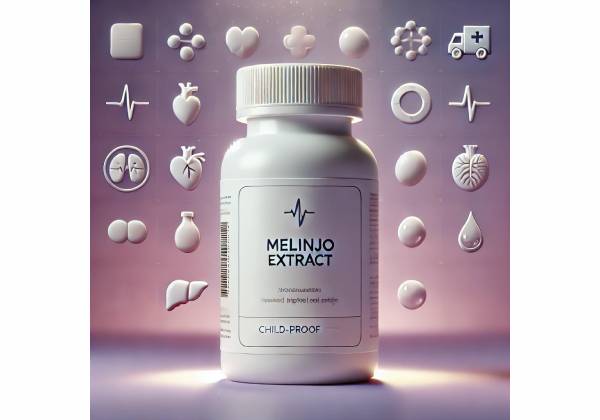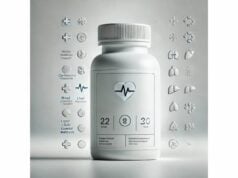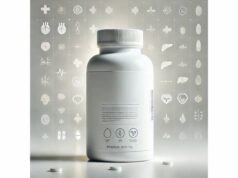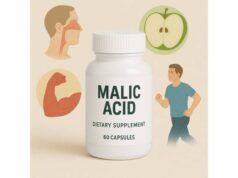
Melinjo extract comes from the seeds of Gnetum gnemon, a Southeast Asian tree whose fruit and crackers (“emping”) are part of daily cuisine. Modern extracts concentrate unique stilbenoids—especially gnetin C (a natural resveratrol dimer) and piceatannol—that have longer retention in the body than regular resveratrol. Early human trials suggest melinjo extract may support healthier uric acid levels, modestly improve lipid markers, and influence adiponectin—the hormone linked to metabolic health. Preclinical work also explores anti-inflammatory and anticancer potential, but those findings are not the same as proven clinical effects. If you are considering melinjo for gout risk, metabolic health, or general wellness, it helps to understand how the extract works, where evidence is strongest, and how to use it safely. This guide explains what melinjo extract is, the compounds that make it different, who may benefit, who should avoid it, and how to dose and combine it with diet and lifestyle for best results.
Quick Overview
- May help lower serum uric acid and modestly raise HDL in some adults.
- May increase adiponectin activity, supporting metabolic health; human data are early.
- Typical study doses: 150–300 mg/day or 750 mg/day of melinjo seed extract (MSE).
- Possible digestive upset or headache; start low and avoid if pregnant or breastfeeding.
- Avoid use or seek medical guidance if you have gout flares, advanced kidney disease, or take drugs that tightly manage uric acid.
Table of Contents
- What is melinjo extract and how it works
- Evidence-backed benefits and mechanisms
- How to take melinjo extract (forms, timing, dosage)
- Factors that influence results
- Side effects, interactions, and who should avoid it
- Research evidence at a glance
What is melinjo extract and how it works
Melinjo extract is a standardized preparation from the seeds of Gnetum gnemon, a tree native to Indonesia and nearby regions. Unlike many botanical supplements, melinjo’s main bioactive compounds are not single molecules but a family of related stilbenoids. The star compound is gnetin C, a natural dimer of trans-resveratrol. The extract also contains piceatannol (a hydroxylated analogue of resveratrol), gnemonosides (glycosylated stilbenoids), and other oligomers.
Why does this matter? Structure determines behavior. Dimeric stilbenes such as gnetin C are bulkier and more resistant to rapid metabolism than resveratrol. In human pharmacokinetic studies, gnetin C and related derivatives persist in circulation for far longer than an equivalent dose of resveratrol. Longer exposure can translate to steadier biological effects from modest daily doses. In practical terms, melinjo extract delivers a “slow-release resveratrol family” profile without being the same as resveratrol.
Mechanistically, the extract appears to act on three fronts that are relevant to everyday health:
- Urate handling (uric acid): Melinjo-derived stilbenoids may influence uric acid balance by promoting intestinal excretion through the ABCG2 transporter in the ileum. This pathway works alongside the kidneys to clear urate and is increasingly recognized as a meaningful route for lowering serum levels. In one human trial, daily melinjo seed extract reduced uric acid over eight weeks and modestly raised HDL cholesterol.
- Adiponectin signaling: Short-term human supplementation with melinjo seed extract boosted high-molecular-weight adiponectin (the more active form) and shifted gene signals (e.g., DsbA-L, AMPK, FoxO1) that support adiponectin multimerization. Adiponectin is associated with better insulin sensitivity, healthier triglycerides, and less ectopic fat.
- Cellular defense and signaling: In preclinical models, gnetin C shows anti-inflammatory and antioxidant activity and modulates cancer-relevant pathways (e.g., MTA1/AKT/mTOR). These results explain growing research interest but should be treated as preliminary for human outcomes beyond uric acid and lipids.
Quality matters. Commercial melinjo products vary in the percentage of resveratrol derivatives, the ratio of gnetin C to piceatannol, and the presence of native seed polyphenols. Standardization and third-party testing help ensure you’re getting what the label claims. Because the extract’s compounds are lipophilic, taking it with a meal containing fat can improve absorption.
In short, melinjo extract is not “just resveratrol.” Its unique stilbenoid profile and long-lasting kinetics set it apart, especially for people interested in uric acid balance, metabolic signaling, or polyphenol-supportive wellness.
Evidence-backed benefits and mechanisms
Uric acid balance and HDL: In a randomized, double-blind, placebo-controlled human trial, adults taking 750 mg/day of melinjo seed extract for eight weeks experienced a significant reduction in serum uric acid compared with placebo, alongside a modest rise in HDL cholesterol. The study population was non-obese Japanese men with impaired flow-mediated dilation, a proxy for vascular function. While the sample was small, the direction of change for uric acid and HDL was consistent and clinically relevant for individuals with borderline hyperuricemia or gout risk.
Why uric acid may drop: Uric acid can be lowered by reducing production (xanthine oxidase inhibition) or by increasing excretion through the kidneys and gut. Data with melinjo point away from strong xanthine oxidase inhibition and toward greater intestinal clearance via ABCG2, an apical transporter concentrated in the ileum. In animal models of hyperuricemia, melinjo-derived stilbenoids increased ABCG2 expression and promoted fecal urate excretion. This mechanism provides a complementary route to kidney-focused strategies and may be helpful for those who cannot tolerate classical urate-lowering drugs—or as a lifestyle adjunct under medical guidance.
Adiponectin and metabolic signals: A 14-day randomized, placebo-controlled trial in healthy young adults tested 150 mg/day and 300 mg/day doses. The 300 mg/day dose increased the ratio of high-molecular-weight to total adiponectin, indicating improved adiponectin multimerization. Supporting laboratory analyses pointed to increased DsbA-L (a chaperone that helps adiponectin form active multimers) alongside shifts in AMPK and FoxO1 signaling—pathways strongly tied to glucose and lipid metabolism. Although short in duration and not designed to change weight or A1c, the study helps explain how melinjo might “tune” metabolic pathways with sustained use.
Vascular and inflammatory context: The same uric-acid-lowering trial reported an HDL cholesterol uptick, and preclinical work reports reduced pro-inflammatory cytokines and angiogenesis signaling with gnetin C. Those findings are mechanistic—not clinical endpoints—but fit the broader picture in which polyphenols act on oxidative inflammation and endothelial function.
Oncology is early-stage: Multiple cell and animal studies show that gnetin C can inhibit tumor-promoting pathways (notably MTA1/AKT/mTOR), slow proliferation, and reduce angiogenesis in prostate cancer models. These studies are hypothesis-generating; they do not mean melinjo extract treats or prevents cancer in humans. If oncology is your primary concern, speak with your oncology team before considering any supplement.
Who is most likely to benefit now:
- Adults with borderline high uric acid (for example, 6.5–7.5 mg/dL) who are not in acute gout flare and whose clinicians support a trial of lifestyle plus adjunctive nutraceuticals.
- Individuals seeking metabolic support who already prioritize diet, movement, and sleep—and want a polyphenol with longer exposure than standard resveratrol.
- People who prefer short trial windows: human data suggest measurable changes in 2–8 weeks at studied doses.
Expectations should be measured. Effects to date are modest and heterogeneous. Genetics (e.g., ABCG2 variants), baseline uric acid, diet (purine and fructose intake), and adherence shape outcomes. Think of melinjo as a supportive lever, not a stand-alone fix.
How to take melinjo extract (forms, timing, dosage)
Forms you will see
- Melinjo Seed Extract (MSE) capsules or tablets: Typically standardized to total resveratrol derivatives. Some labels highlight gnetin C or piceatannol content; others list “melinjo seed extract” with a milligram amount.
- Gnetin C-standardized extracts: Fewer products, often marketed as “resveratrol dimer.”
- Complex blends: MSE combined with grape or green tea polyphenols. These can be fine for general wellness but make dose tracking harder.
Evidence-based dose ranges
- 150–300 mg/day of MSE for 14 days: affected adiponectin multimerization in healthy adults.
- 750 mg/day of MSE for 8 weeks: lowered uric acid and raised HDL in adult men.
- 1,000 mg/day used in pharmacokinetic work to compare exposure vs. resveratrol.
- Single doses up to 5,000 mg appeared well tolerated in a clinical pharmacology context (not a typical wellness dose).
Practical starting points
- Goal: support uric acid
- Start 300–500 mg/day of MSE with your main meal for 2–4 weeks.
- Re-check serum uric acid (and symptoms, if applicable) with your clinician before adjusting.
- If tolerated and uric acid remains high, some adults trial 750 mg/day under supervision.
- Goal: metabolic signaling (adiponectin, lipids)
- Start 150–300 mg/day with food for 2–4 weeks.
- Track simple markers: fasting glucose, triglycerides, waist circumference, and energy after meals. Expect subtle changes—this is not a stimulant.
Timing and food
- Take with a meal that includes fat (e.g., eggs, yogurt, avocado, olive oil) to aid absorption of stilbenoids.
- Split dosing is optional. Given the long residence time of gnetin C, once daily is reasonable.
Stacking tips (evidence-aligned)
- With vitamin C-rich foods (citrus, berries) to complement antioxidant networks without overlapping pathways excessively.
- With fiber (e.g., psyllium at another time of day) if you are targeting metabolic health and triglycerides.
- Avoid stacking with multiple high-dose polyphenol concentrates initially; add one variable at a time to gauge response.
When to reassess
- If you do not see an objective or subjective benefit after 8–12 weeks at a tolerated dose, reassess with your clinician. Consider diet contributors: purines (anchovies, organ meats), sugar-sweetened beverages, and alcohol—especially beer—can overshadow supplement effects on uric acid.
Quality checklist
- Standardized extract with declared mg per serving and, ideally, gnetin C or total stilbenoids %.
- Third-party tested (USP, NSF, or equivalent).
- Transparent excipients (avoid proprietary blends without amounts).
- Clear allergen and origin labeling.
Factors that influence results
1) Baseline diet and lifestyle
Uric acid production rises with excess purines (certain meats, seafood), high-fructose intake (soft drinks, some processed foods), and heavy alcohol—especially beer and spirits. Even a well-designed supplement can only marginally offset these drivers. If your goal is urate control, prioritize hydration, moderation with purine-dense meals, and limiting sweetened beverages. On the metabolic side, fiber intake, protein distribution, and resistance training can amplify any modest lipid or adiponectin shifts from melinjo.
2) Genetics and transporters
Variants in ABCG2 affect how effectively your intestine secretes uric acid. People with reduced-function variants may have higher baseline urate and a different response to interventions that rely on intestinal excretion. Similarly, genetic differences in DsbA-L and adiponectin pathways can alter how strongly a 150–300 mg/day dose shifts adiponectin multimerization. These nuances can help explain why two people on the same regimen experience different results.
3) Kidney function and medications
The kidneys are still the main exit route for urate. Chronic kidney disease changes both production and excretion, and it can interact with supplements that act via transporter pathways. Medications also matter: uricosurics, low-dose aspirin, diuretics, and certain blood pressure drugs influence urate handling. If you’re taking allopurinol, febuxostat, probenecid, benzbromarone, or SGLT2 inhibitors, coordinate any supplement trial with your prescriber to avoid confounding changes or unexpected flares.
4) Product chemistry and standardization
Two bottles labeled “melinjo seed extract 300 mg” may differ in gnetin C and piceatannol content by several fold. Because gnetin C appears to have longer persistence in plasma, extracts richer in gnetin C could feel stronger or more sustained at the same milligram dose. This is a case where brand transparency and third-party testing make a real difference.
5) Duration and adherence
Human studies showing changes often ran 2–8 weeks. Expecting a shift after three days sets you up for disappointment. Likewise, intermittent use (“when I remember”) lowers the chance of seeing a meaningful effect, especially with a mechanism that builds through transporter expression and hormone multimerization.
6) Confounding supplements
High-dose niacin raises uric acid in some people. Creatine can be misattributed to “kidney issues” on labs (via higher creatinine). Other polyphenols can crowd absorption or compete for transporter activity. Keep your regimen simple during the first month and add back items gradually.
7) Measurement and feedback
Track serum uric acid, HDL, triglycerides, and, if available, hs-CRP or fasting insulin. For subjective markers, note joint comfort, post-meal energy, and sleep quality (polyphenols can occasionally alter sleep in sensitive people). Use the same lab and time of day when possible to minimize noise.
The bottom line: outcomes hinge on the terrain—your diet, genetics, kidney function, medications, and the exact extract you choose. Align these factors before judging whether melinjo “worked” for you.
Side effects, interactions, and who should avoid it
Typical tolerability
Melinjo extract is generally well tolerated in clinical settings, including single-dose pharmacology studies at gram-level intakes. In everyday use, the most common complaints are mild digestive upset, headache, or transient nausea, often mitigated by taking the supplement with food and starting at the low end of the range.
Potential side effects or cautions
- Gout dynamics: When uric acid shifts—down or up—some individuals with gout history experience flares. Introduce melinjo only when you are not in an acute flare, and coordinate with a clinician if you are on urate-lowering therapy.
- Kidney disease: Because urate handling intersects with kidney function, people with moderate to severe CKD should avoid unsupervised use.
- Liver enzymes and lipids: Human data have shown neutral to modestly favorable changes, but if you have liver disease or unexplained enzyme elevations, monitor labs.
- Bleeding risk: Stilbenoids can influence platelet function in lab models. If you take anticoagulants or antiplatelet agents, seek medical advice before use.
- Allergy: If you are allergic to melinjo foods or experience rash, itching, or breathing difficulty, discontinue and seek care.
Drug and nutrient interactions
- Urate-modulating drugs: Combining melinjo with allopurinol, febuxostat, probenecid, benzbromarone, or SGLT2 inhibitors can complicate interpretation of uric acid labs. Your prescriber may want to monitor more frequently.
- Blood pressure medications and diuretics: Thiazides and loop diuretics can raise uric acid; do not treat those effects with supplements without medical input.
- Chemotherapy and transporter-sensitive drugs: ABCG2 variants and activity affect the disposition of several medications. If you are on chemotherapy or drugs with a narrow therapeutic window, get explicit clearance before adding melinjo.
Who should avoid or use only with medical supervision
- Pregnant or breastfeeding individuals: Insufficient safety data—avoid.
- Children and adolescents: Not established—avoid unless instructed by a pediatric specialist.
- Active gout flare: Delay until symptoms resolve and you have a plan with your clinician.
- Significant kidney disease or history of kidney stones: Use only under supervision.
If you experience a flare or side effect
- Stop the supplement.
- Record dose, timing, and concurrent foods/meds.
- Consult your clinician with recent labs if available.
- Re-challenge only if there is a clear benign explanation and medical approval.
Remember: melinjo is a tool, not a cure. Safe use means aligning dose and timing with your overall medical picture.
Research evidence at a glance
Human trials
- Uric acid and HDL: In an eight-week randomized, placebo-controlled trial (adult men), 750 mg/day melinjo seed extract lowered serum uric acid compared with placebo and raised HDL. Mechanistic assays showed the extract and its stilbenes did not strongly inhibit xanthine oxidase, pointing toward other pathways.
- Adiponectin multimerization: In a two-week randomized, placebo-controlled trial (healthy young adults), 300 mg/day increased the high-molecular-weight/total adiponectin ratio, with supporting shifts in DsbA-L, AMPK, and FoxO1 signals. The 150 mg/day dose had smaller effects.
- Pharmacokinetics and safety: Compared with an equal amount of trans-resveratrol, 1,000 mg of melinjo seed extract provided greater and longer plasma exposure to resveratrol derivatives, especially gnetin C, which persisted beyond 96 hours. Doses up to 5,000 mg were well tolerated in a clinical pharmacology setting.
Mechanistic and preclinical
- ABCG2 pathway: In hyperuricemic rats, melinjo-derived stilbenoids increased intestinal ABCG2 expression and enhanced fecal urate elimination, aligning with the human uric-acid–lowering signal and the modern understanding that the gut contributes substantially to urate disposal.
- Oncology models: Gnetin C has repeatedly shown MTA1/AKT/mTOR pathway modulation, reduced proliferation, and anti-angiogenic effects in prostate cancer cell and mouse models. Reviews in recent years summarize broader antimicrobial, antioxidant, and anti-inflammatory properties. These data are promising but preclinical; they inform hypotheses and safety considerations, not clinical claims.
What it means for you
- If your primary goal is lowering uric acid, human data support a supervised trial at 300–750 mg/day for 4–8 weeks, with labs before and after.
- For metabolic signaling, a 150–300 mg/day course for 2–4 weeks may shift adiponectin biology; real-world changes in weight or A1c require a longer horizon and comprehensive lifestyle changes.
- For cancer prevention or treatment, do not self-prescribe melinjo. Discuss any interest with your oncology team given drug–transporter considerations.
As more trials appear—ideally larger, longer, and more diverse—we will better understand who benefits most and the dose-response curve across different health goals.
References
- Melinjo (Gnetum gnemon L.) Seed Extract Decreases Serum Uric Acid Levels in Nonobese Japanese Males: A Randomized Controlled Study 2013 (RCT)
- Pharmacokinetics and safety of resveratrol derivatives in humans after oral administration of melinjo (Gnetum gnemon L.) seed extract powder 2014
- Melinjo seed extract increases adiponectin multimerization in physiological and pathological conditions 2020
- Gnetin C Intercepts MTA1-Associated Neoplastic Progression in Prostate Cancer 2022
- Gnetin C in Cancer and Other Diseases: What Do We Know So Far? 2025 (Review)
Disclaimer
This article is for educational purposes only and is not a substitute for personalized medical advice, diagnosis, or treatment. Always consult a qualified healthcare professional before starting, stopping, or changing any supplement, especially if you have medical conditions, are pregnant or breastfeeding, or take prescription medications. Never delay seeking professional guidance because of something you read here.
If you found this helpful, please consider sharing it with a friend or posting it on Facebook, X (formerly Twitter), or your favorite platform. Your support helps us keep creating careful, people-first health guides. Thank you.










